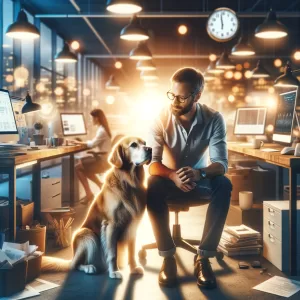Zoos, for many of us, were our first exposure to the dizzying diversity of the animal kingdom. They offered a safe haven to experience the majesty of a tiger, the playfulness of monkeys, or the gentle elegance of a giraffe. But as we’ve grown older, so too have our perceptions and understanding of these complex institutions. This exploration seeks to navigate the paradoxical world of zoos – sanctuaries of conservation and subjects of critique – in the hopes of fostering a balanced perspective on their role in animal conservation.
Chapter 6: Zoos of the Future: Charting the Path with Innovation and Improvements
The Continuous Evolution of Zoos
Zoos, like any other institution, are not static. They are continually evolving, driven by scientific advances, changing societal values, and a deeper understanding of animal needs. As we navigate towards the future, we see an exciting transformation taking shape in the world of zoos. This transition is marked by innovative designs, technology integration, and strengthened ties with in-situ conservation organizations. Let’s explore how these developments are shaping the zoos of the future, promising a landscape that upholds the highest standards of animal welfare and conservation.
Design Revolution: Towards More Naturalistic Habitats
Zoos of the future will continue to break away from the ‘cages and bars’ paradigm, moving towards more naturalistic, spacious habitats. Innovative design approaches focus on recreating the complexity of natural environments, promoting behavioral enrichment and overall well-being of animals. These designs consider every detail – from the choice of vegetation and terrain to the provision of privacy areas and socialization opportunities. Such habitats do not merely house animals; they aim to provide a dynamic, stimulating environment that encourages natural behaviors.
Technology Infusion: Interactive and Engaging Education
As technology advances, it’s finding its place in zoos, transforming how visitors learn about animals and conservation. Augmented reality (AR) and virtual reality (VR) technologies offer immersive experiences, taking education beyond mere observation. Interactive digital signage, apps, and games provide engaging ways to learn about an animal’s natural behavior, diet, and conservation status. By making learning fun and interactive, zoos of the future can inspire a deeper connection with nature and a stronger commitment to conservation.
Collaborative Conservation: Joining Hands with In-situ Organizations
The future of zoos also entails stronger collaborations with in-situ conservation organizations. Recognizing that both ex-situ (within zoos) and in-situ (in natural habitats) conservation have their merits, a complementary approach is gaining momentum. Zoos are increasingly participating in conservation initiatives that protect and restore natural habitats, combat poaching, and manage human-wildlife conflicts. By joining forces with in-situ organizations, zoos can contribute to a holistic, multifaceted approach to conservation.
Embracing Change: The Path to Ethical and Relevant Zoos
The zoo of the future is not a static concept but an evolving vision. As our understanding of animal welfare, conservation needs, and educational strategies deepens, zoos must adapt and improve. They must align their practices with core values of respect for wildlife, commitment to conservation, and dedication to education.
This vision is not a utopian dream, but a feasible goal that many zoos are already striving towards. By embracing innovation, harnessing technology, and forging meaningful collaborations, zoos can ensure their relevance and ethical standing in the years to come. As we look forward to this exciting transformation, we can envision a future where zoos not only conserve wildlife but also inspire a profound respect for the natural world among their visitors.








